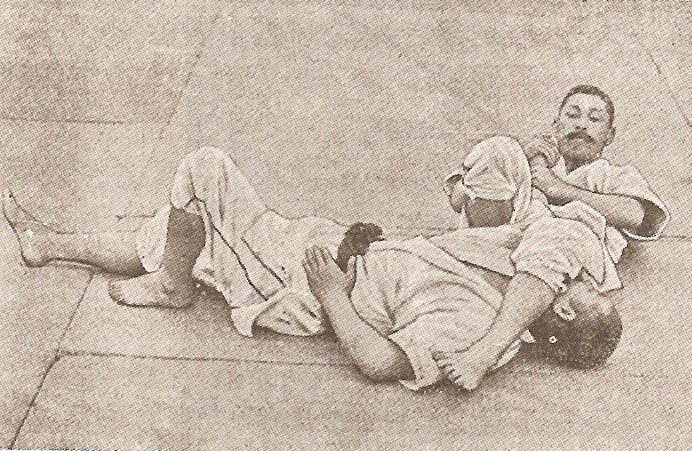The armbar is a fundamental and versatile submission technique in Brazilian Jiu-Jitsu (BJJ) and various martial arts disciplines, targeting the opponent’s elbow joint by hyperextending it. As one of the first moves taught in jiu-jitsu classes, it is an essential submission to master. Despite its simplicity and ancient roots, perfecting the armbar takes years of practice, as there are always new techniques to learn and ways to refine your execution.
In this comprehensive guide, we will explore the intriguing world of armbars, delving into its history, techniques from different positions, and how they work. We will also provide tips for success, discuss common mistakes to avoid, and share strategies for defending against this powerful submission hold. Whether you are a beginner or a seasoned grappler, this article aims to enhance your armbar knowledge and skillset.
Key Takeaways
- The armbar is a highly effective and versatile submission technique in BJJ that targets the opponent’s elbow joint by hyperextending it.
- The armbar has deep historical roots in various grappling disciplines and was first documented in Japan around the 15th century. It became a staple move within traditional Jiu-Jitsu before being incorporated into modern judo by Jigoro Kano, founder of Kodokan Judo.
- There are different techniques for executing an armbar from guard, mount, spider guard, and knee-on-belly positions. Each technique requires proper control and positioning before applying leverage and pressure to secure the submission.
- Improper execution of this technique can lead to injury, so practitioners should practice under proper supervision gradually increasing intensity as proficiency is gained.
Basics of Armbar And Its History
Armbar History:
Grappling sports can be traced back to at least the Upper Paleolithic (Old Stone Age) era, around 15000 BC. There are ancient cave paintings that exist depicting wrestling competitions over 17,000 years ago. Wrestling, a ruled subset of grappling, is now considered the oldest living organized sport. Complete wrestling manuals found in Greece, contain detailed instructions on techniques and date back to 100-200 AD. We can look to Greece for a substantial amount of information regarding the sport, especially in reference to submissions.
Pankration, literally translating to ‘all of the power’, is an ancient Greek martial art that mainly combined boxing and wrestling; however, it also involved kicks and locks, holds, and chokes on the ground. According to Greek Mythology, it was created by divine heroes, Heracles (son of Zeus) and Theseus (founder of Athens), who used it against their legendary opponents. From an academic standpoint, it is thought to have entered society around the 7th century BC, but other evidence suggests it may go as far back as the second millennium BC.
It provided a solution of a ‘total combat’ sport, something boxing or wrestling alone cannot provide, similar to MMA today. Although knockouts did happen, the majority of competitions were finished via submission. Also adopted by Greek soldiers (including Spartans), Pankration was introduced into the Greek Olympics in 648 BC.
Arm lock variations have been recorded for almost 3000 years and existed as a technique in the Pankration arsenal. An armlock is a single or double joint lock that hyperextends, hyperflexes, or hyper rotates the elbow or shoulder joint (or in some cases, both). If the lock hyperflexes or hyper rotates the shoulder joint, it is known as a shoulder lock; however, if it hyperextends the elbow joint, it is called an armbar.
Clearly, the armbar was not created from BJJ, but it has been evolved by it. It’s considered one of the best techniques to ever master due to its incredible effectiveness and versatility. Aside from that, it is an efficient way to win a fight. It is so powerful that fighters like the legendary pioneer of women’s MMA, Ronda Rousey, built her illustrious career with it, scoring her first 8 UFC wins with an armbar.
Today, the armbar remains a fundamental technique in various modern grappling disciplines, including BJJ, submission wrestling, and judo, where it is known as juji-gatame. As a constantly evolving submission, the armbar continues to be revolutionized, maintaining its status as a critical aspect of grappling expertise.
How Does An Armbar Work?
An armbar works by hyperextending the opponent’s elbow joint, causing intense pain and ultimately leading to a submission. By isolating the adversary’s limb, a practitioner gains a mechanical advantage, using their body strength against the weaker part of their opponent’s appendage.
For instance, in the classic Jiu-Jitsu armbar from guard position, one would first secure a firm grip on their rival’s wrist or hand as they reach forward. Then they need to use their legs to create angles and break down an opponent’s posture; simultaneously bringing one leg high up under the attacker’s armpit, while hooking the other leg across their back or hips for added leverage.
Armbar Mechanics:
This lock focuses on using the strongest parts of one’s body together against the opponent’s weakest parts. It requires full body leverage to apply the lock while simultaneously preventing the opponent from escaping.
Defined by the practitioner having a hold of the opponent’s arm by the wrist while securing the rest of their body with the legs, the armlock forces the victim to tap out or face a broken elbow. It is not only dangerous, but also highly adaptable, as it works from a variety of angles and both dominant and non-dominant positions. Additionally, opportunities for an armbar present themselves often so it is a worthwhile technique to master early on in your training.
The trick with armbars is to get the right setup. It is essential to exploit the extended arms of the opponent. However, only beginners will give up this position willingly. After a certain level of experience, the reaction must be enticed out of them. This lock can be obtained from any starting guard position, but is traditionally performed from high mount, which is favored in gi BJJ.
Armbar Techniques From Guard
Learn how to execute the armbar from guard, including speed and reverse variations, by mastering the fundamental techniques of controlling your opponent’s arm and applying proper leverage.
Armbar From Guard
The armbar from guard is a fundamental and effective technique in Brazilian Jiu-Jitsu that allows a practitioner to submit their opponent by hyperextending their elbow joint. To execute this submission, follow these essential steps:
- Begin in the closed guard position, with your legs wrapped around your opponent’s waist and feet crossed behind their back.
- Cross-grab the arm you want to attack at the tricep, and with your other hand, cross-grab their shoulder to hold them in place and prevent them from posturing up.
- Open your guard and place the foot of the same side as the controlled arm on your opponent’s hip, connecting to their side and creating an angle for further maneuvering.
- Use your other leg to hook across their back, breaking their posture further and holding them in place for the armbar.
- Use your legs and hips to turn and establish an angle for the submission. Simultaneously swing your leg over their shoulder and around their head, keeping your knees tight and your leg heavy on their neck for control.
- Slide your hand from their upper arm to their wrist, aligning their thumb (pinky finger facing up) with the fulcrum point of their elbow joint.
- To apply pressure for the submission, maintain control over your opponent’s wrist and push down using leverage from both legs while raising your hips upward towards their elbow joint.
- The combination of downward wrist pressure and upward hip pressure will create tension on the elbow joint, leading the opponent to tap due to pain or risk injury.
By following these steps, you can execute a tight and efficient armbar from guard in Brazilian Jiu-Jitsu matches or training sessions, making it a crucial technique for all practitioners to master.
Speed Armbar From Guard
The speed armbar from guard is an effective and quick submission technique that can catch your opponent off-guard, especially if you have good hip mobility. Here are the steps to execute this move successfully:
- Control your opponent’s arm with your arm on the same side, grabbing their wrist and pulling it across your body.
- As you do this, use your opposite leg to push against your opponent’s hip, creating space for you to pivot your body.
- Hook under their leg with your free hand, which will allow your hips to turn more easily.
- Pivot on your hips and swiftly kick your leg over their head.
- At the same time, release their wrist and grab onto their triceps with both hands, bringing it towards you.
- Squeeze your legs together while extending their arm, completing the submission.
This move is an excellent way to surprise an opponent who thinks they have control of the situation. Remember to keep control of their arm throughout the entire process and maintain proper positioning to avoid any counterattacks or escapes. While it may not be as tight as a traditional armbar setup, the speed armbar from guard is the fastest option for those with good hip mobility.
Reverse Armbar From Guard
The reverse armbar from guard is a BJJ submission technique that involves attacking the opponent’s far-side arm from an opposite angle. Here are the steps to execute this move:
- From the guard position, control your opponent’s near-side arm by underhooking the arm you want to attack.
- Hip escape your hips out and attach your top leg to the opponent’s shoulder while using your inside leg to hook under their elbow, locking them in place.
- Use your free leg to hook behind your opponent’s far-side knee to prevent them from stepping over and escaping.
- Release control of your opponent’s near-side arm and swing it across their body towards their opposite shoulder.
- Secure a grip on their far-side wrist with both hands, keeping their elbow tight against your chest, and grip your hands together.
- Place the blade of your wrist above their elbow to apply downward pressure.
- Press down with your chest and pull up with both arms to apply pressure on their elbow joint, causing them to tap out or suffer injury.
The reverse armbar from guard is an effective submission technique because it attacks the opponent’s far-side arm, which they may not be expecting. However, like all BJJ submissions, it requires proper control and positioning before applying leverage and pressure. It is important to practice this technique under the guidance of an experienced instructor before attempting it in a live roll or competition setting.
Armbar Techniques From Mount
In this section, we will explore the armbar from mount, as well as a knee on belly armbar technique that can be highly effective when executed correctly.
Armbar From Mount
Executing a basic armbar from mount is highly effective when your opponent extends their arms in defense. Here are the steps for successfully applying this submission:
- Choose the arm to attack: If your opponent sticks their arms out, select one and establish control by placing your hands over it and grabbing their tricep.
- Pull their shoulder off the mat: Use your grip on their tricep to lift their shoulder, creating space to maneuver.
- Rotate your hips and legs: Pivot your hips and legs around your opponent’s arm, stepping over their head with one leg. Keep your hips low during this step to maintain control.
- Secure control over their arm: Squeeze your legs around their arm and hug it tightly to your chest.
- Fall back and apply pressure: Slowly lean back until your back touches the mat, and then bridge your hips upward to apply pressure on their elbow joint, causing them to tap out.
Practice this technique with caution and under proper supervision to ensure safety and improve proficiency. As you become more comfortable with the move, you can increase the intensity and speed at which you execute it.
Knee On Belly Armbar
The Knee on belly armbar is an effective submission technique that can be executed when an opponent defends against the knee-on-belly position. Here are the steps to successfully perform this move:
- Establish knee-on-belly position: Place one knee on your opponent’s stomach or chest, with the other leg remaining behind for balance.
- Hook under their arm: When your opponent attempts to push your knee off, hook under their arm, grabbing their tricep, and lift their shoulder off the mat.
- Rotate your hips: Lift your hips up and rotate around your opponent’s head, while maintaining control of their arm.
- Secure control over their arm: Hug their arm to your chest and pinch your knees around it.
- Finish the submission: Slowly lean back, extending their arm and applying pressure on their elbow joint, causing them to tap out.
Remember to maintain proper weight distribution and control over your opponent throughout the entire process. Be cautious not to apply excessive pressure, as it may cause injury to your opponent’s arm or elbow. With consistent practice, this technique can become an effective submission move in BJJ and other grappling sports.
Armbar Techniques From Spider Guard
Armbar from spider guard involves trapping one of the opponent’s arms between both legs and securing the other arm while applying pressure to their elbow joint.
Armbar From Spider Guard
The armbar from spider guard is a highly effective submission technique in Brazilian Jiu-Jitsu. It involves controlling your opponent’s arm and using their own momentum to execute the submission. Here’s how to perform the armbar from spider guard:
- Establish spider guard position: Obtain sleeve grips on your opponent and place both of your feet on their biceps, creating space and control.
- Straighten the leg on the attacking side: Straighten the leg on the arm you want to attack and turn your hips.
- Pull their arm and kick off: Kick off your foot as you pull their arm towards you, creating tension on their arm.
- Secure the armbar: With the tension already on their arm, bring your leg back over their head, securing their arm in position.
- Finish the submission: Apply steady pressure on their elbow joint by extending your hips and squeezing your thighs together around their arm.
By following these steps, you can successfully execute an armbar from spider guard and add another powerful technique to your BJJ repertoire. Remember to maintain control of your opponent’s posture and positioning throughout the entire process to ensure a successful submission.
Armbar Counter To Lasso Guard
The lasso guard can be a challenging position to attack from, but there are ways to counter it with an armbar submission. Here are the steps for executing an armbar counter to lasso guard:
- Begin by identifying the opportunity: If your opponent’s outside leg is too close to your body, you have the chance to counter their lasso guard.
- Grab your opponent’s pant leg: Obtain a grip on their outside pant leg and pass it over to the arm they have trapped in the lasso guard.
- Secure control of their free arm: Grab the sleeve of their free arm, ensuring a firm grip on their wrist.
- Turn your opponent: With the sleeve grip secured, start turning your opponent like a wheel. Continue turning them until their arm is between their leg.
- Grab their arm with both hands: Once their arm is in position, grab it with both hands to establish control.
- Execute the armbar: With their arm secured, apply leverage and pressure to hyperextend their elbow joint, forcing them into an armbar submission hold.
Remember that executing any technique in BJJ requires proper positioning, leverage, and control over your opponent’s body. It is also important to avoid common mistakes such as losing posture or attempting the technique too forcefully. With practice and patience, you can improve your ability to execute effective submissions like the armbar counter to lasso guard.
Tips For Executing A Successful Armbar
To execute a successful armbar, it is important to establish control over your opponent, set up the armbar properly, apply leverage and pressure effectively, maintain proper positioning and pressure throughout the move and know when to transition to another technique.
Establishing Control Over Your Opponent
Before attempting an armbar, it is crucial to establish control over your opponent. This involves securing a dominant position and immobilizing the opponent’s movements.
One way to establish control is by using grips and hooks on the lower body or hips, which helps prevent the opponent from escaping or repositioning. Another way is by controlling their posture through maintaining pressure with your chest on their head or shoulders while ensuring you have secure foot placement.
Setting Up The Armbar
Setting up the armbar involves establishing control over your opponent’s arm and positioning yourself correctly for the submission. The first step is to secure their arm by grabbing their wrist or forearm, then controlling it with your free hand.
One common technique used when setting up an armbar from guard is to bring one leg over your opponent’s head and the other around their waist. This creates a tight squeeze around their body, making it difficult for them to escape or counterattack.
Additionally, transitioning smoothly between different positions can help set up more advanced variations of the armbar, such as the flying or rolling armbar.
Applying Leverage And Control
To apply a successful armbar, leverage and control are crucial. The goal is to manipulate the opponent’s limbs in a way that creates maximum pressure on their joints without sacrificing one’s own balance and positioning.
When executing an armbar from guard, for instance, the attacker pushes off their free leg while pulling down on the trapped arm to generate maximum torque on the elbow joint.
In mount position, the attacker might need to use their chest or hips as additional points of control while grabbing onto their opponent’s wrist with both hands.
Another aspect of applying proper leverage and control in an armbar is knowing when to adjust technique mid-submission if necessary. For example, if an opponent starts adjusting their body position or posture during a submission attempt from spider guard, it may be necessary to switch up techniques and transition quickly into another submission hold such as a triangle choke or omoplata.
Maintaining Proper Pressure And Positioning
To execute a successful armbar, maintaining proper pressure and positioning is crucial. This involves applying the right amount of pressure to control your opponent’s movements and preventing them from escaping while also avoiding putting too much force that could result in injury.
For instance, when attempting an armbar from guard, using your legs to control their hips will allow you to create space for proper shoulder placement and keep yourself safe from counter attacks.
Overall, mastering these techniques requires practice and patience as it takes time to develop the sensitivity needed for effective pressure management and positioning awareness.
Knowing When To Transition To Another Technique
At times, despite having control over the opponent’s arm and applying proper technique, an armbar may not be possible to execute. In such situations, it is crucial to know when to transition to another submission technique.
Similarly, if one is attempting an armbar from guard but has difficulty securing the necessary grip due to slippery skin or clothing, transitioning into a sweep or a triangle choke could result in a successful submission.
Knowing when and how to make these transitions requires experience and technical knowledge of various grappling techniques.
Common Mistakes To Avoid While Doing An Armbar
Avoid trying to force the armbar and instead focus on establishing control and applying leverage.
Trying To Force The Armbar
One of the common mistakes made while executing an armbar is trying to force it. This often happens when a practitioner fails to secure the position correctly or loses control over their opponent’s posture.
Forcing an armbar can lead to injury, not just for the person on the receiving end but also for the practitioner themselves as they may exert too much pressure and strain their own muscles.
Instead, practitioners should focus on establishing control over their opponent first before setting up an armbar with proper leverage and control. Knowing when to transition to another technique is also crucial in avoiding forcing an armbar unnecessarily and risking injury.
Failing To Secure The Position Properly
One of the most common mistakes when attempting an armbar is failing to secure the position properly. Without proper control, executing an armbar becomes difficult and often leads to a failed submission attempt or even worse, giving up dominant position.
Securing proper control over your opponent’s arms involves a combination of leverage, pressure, and technique. One way to establish control is by using your legs to trap your opponent’s shoulders while squeezing their head with your arms before locking in the armbar.
It’s important not to rush this step as it can determine the success or failure of the move.
Losing Control Of The Opponent’s Posture
One of the common mistakes that beginners make while attempting an armbar is losing control of their opponent’s posture. An essential element of executing a successful armbar is maintaining tight control over the opponent’s movements.
To prevent this mistake, individuals should focus on controlling not only their opponent’s arms but also their hips and head positions. Applying pressure to one side while holding onto the elbow joint with your legs provides mechanical advantage in securing your grip.
Additionally, squeezing your knees together ensures that there is no space for opponents to post his foot, making them more vulnerable.
Applying Too Much Pressure Or Too Little Pressure
One of the common mistakes people make when executing an armbar is applying too much or too little pressure. Applying too much pressure can cause serious injury to the opponent’s elbow joint, while applying insufficient pressure might result in the opponent escaping from the hold.
To find a balance in applying pressure, it is important to establish secure control over your opponent first before attempting an armbar. This involves maintaining proper positioning and leverage throughout the technique.
Additionally, knowing when to transition to other techniques can be useful if you feel that your initial attempt at an armbar is not effective enough.
How To Defend Against An Armbar
To defend against an armbar, it’s essential to recognize the setup and maintain proper posture and positioning, counter the armbar attempt, or escape the hold by rotating out of it.
Recognizing The Setup
One of the keys to successfully defending against an armbar is recognizing when your opponent is setting it up. One indication that an armbar may be coming includes your opponent attempting to control or isolate one of your arms.
They may also be actively working to position themselves in a way that will allow them to secure the submission, such as transitioning into mount or spider guard.
It’s important to maintain awareness of these setups so you can proactively defend against them. By remaining vigilant and anticipating potential attacks, you can stay ahead of your opponent and potentially avoid being caught in a dangerous submission hold.
Maintaining Proper Posture And Positioning
Maintaining proper posture and positioning is critical to executing a successful armbar. To apply the technique, it’s essential to control your opponent’s arm and keep their elbow joint locked while applying leverage from your hips.
It’s important not to let your opponent escape or change positions when attempting an armbar. You should have complete control over their shoulder as you set up for the submission.
It may be necessary, at times, to adjust your grip or angle slightly.
Countering The Armbar Attempt
Countering an armbar attempt is crucial for any practitioner of BJJ. Here are some tips to help you defend against this submission hold:
- Recognize the setup: The first step in defending against an armbar is to recognize the setup. This can involve identifying when your opponent is attempting to control your arm, such as by positioning their legs around your torso.
- Maintaining proper posture and positioning: You need to keep your body in the correct position at all times when defending against an armbar. This may involve keeping your elbows close to your body or using your free hand to grab onto your own gi.
- Countering the armbar attempt: If you feel that your opponent has locked in the armbar, try countering their move by rolling out of it or rotating towards them.
- Escaping the armbar hold: If you cannot prevent the armbar from being applied, try escaping from it by twisting away from the pressure or slipping out of their grip.
Remember, prevention is better than cure. By maintaining good posture, you can avoid leaving yourself vulnerable to an opponent’s arm control and subsequent submission attempt.
Escaping The Armbar Hold
If caught in an armbar hold, it is essential to know how to escape the submission and prevent injury. Here are some tips for escaping an armbar hold:
- Defend the initial submission setup by keeping your elbows close to your body and protecting your arms from being controlled.
- Posture up and stack the attacker by driving your hips forward and lifting their legs off the ground, making it difficult for them to apply pressure on your arm.
- Use your free arm to reach over the attacker’s head and grab their far shoulder while pulling your trapped arm out of harm’s way.
- Rotate towards the trapped arm, bringing both you and the attacker perpendicular to each other, reducing their mechanical advantage.
- Create space between yourself and the attacker by pushing your hips away from them while pulling the trapped arm towards you.
- If all else fails, tap out before sustaining serious injury.
Remember that prevention is always better than cure when it comes to submissions like armbars. Always ensure proper control over your opponent’s posture while defending against armbar setups to avoid getting caught in one in the first place.
Armbar Variations And Advanced Techniques
In addition to the traditional armbar, there are also more advanced variations such as the flying armbar and rolling armbar that require skill and precision.
Flying Armbar
The flying armbar is an advanced technique that involves leaping onto the opponent’s back to secure the submission. Here are some key points to consider when attempting a flying armbar:
- The move begins with the individual grabbing the opponent’s collar or sleeve with one hand and their head with the other.
- Using their legs for leverage, the individual then launches themselves into the air, aiming to wrap their legs around the opponent’s neck while simultaneously falling backward.
- Once in position, they release their grip on the collar/sleeve and use both hands to control the opponent’s arm.
- The individual then completes the armbar by pulling down on the opponent’s wrist with both hands while squeezing their legs together to apply pressure.
While impressive, attempting a flying armbar can be risky and should only be done by experienced practitioners. It requires careful timing, precision, and expert control over one’s movements. Additionally, it is important to recognize that if executed improperly, both individuals involved in the move could become seriously injured.
Rolling Armbar
The rolling armbar is an advanced variation of the traditional armbar technique that involves rolling your opponent over before securing the submission. Here are some key details about the rolling armbar:
- To set up the rolling armbar, you will need to create control of your opponent’s arm while in a top position, such as mount.
- From there, you should begin to roll your hips over and towards your opponent’s head, bringing them with you on top of their shoulder.
- As you roll over, keep tight control of their arm and use it to apply pressure to their elbow joint.
- Finish by using your legs and hips to squeeze and extend the elbow joint until they tap or verbally submit.
Some important things to keep in mind when attempting a rolling armbar include:
- It requires good timing, balance, and control to execute successfully.
- It can be risky if your opponent is able to escape or defend against the move.
- It can also leave you vulnerable to counterattacks from other opponents if performed incorrectly.
Overall, the rolling armbar is an advanced technique that should only be attempted by experienced BJJ practitioners who have mastered basic submissions and transitions. If executed correctly, however, it can be an effective way to catch opponents off guard and secure a win.
Switching To Other Submission Techniques
Once you have established control over your opponent’s arm and positioned yourself for the armbar submission, there are several options to consider if it is not successful. Here are some other submission techniques to switch to:
- Triangle choke – This technique involves trapping the opponent’s head and arm with one leg while positioning the other leg across their neck, cutting off blood flow to the brain.
- Kimura lock – This submission move involves controlling the opponent’s arm and using leverage to apply pressure on their shoulder joint, causing them to submit.
- Omoplata – Similar to the triangle choke, this technique involves trapping an opponent’s arm between your legs and using leverage on their shoulder joint.
- Guillotine choke – This technique involves wrapping your arm around an opponent’s neck and applying pressure either standing or from a ground position.
Knowing multiple submission techniques allows you to be more versatile in your BJJ strategy, giving you more opportunities for success during a match or sparring session. However, switching too quickly between techniques without solid control over your opponent can lead to missed opportunities and potentially dangerous situations. Practice transitioning smoothly between different submission techniques to increase your effectiveness on the mat.
FAQs
1. What is an armbar submission in Brazilian Jiu-Jitsu?
An armbar submission involves using leverage and pressure to hyperextend an opponent’s elbow joint, causing them to tap out due to pain or fear of injury.
2. How do you set up an armbar in BJJ?
There are several ways to set up an armbar, but most commonly it involves trapping your opponent’s arm with your legs while controlling their body posture and positioning your own hips near their shoulder. From there, you apply pressure on the trapped elbow by extending your hips and pulling on their wrist or forearm.
3. Can anyone learn how to perform an armbar submission?
Yes, anyone can learn how to perform an armbar submission in BJJ with proper training and practice. However, it’s important to start with a solid foundation of basic techniques and gradually progress towards more advanced moves like the armbar.
4. Are there any risks involved when attempting an armbar on someone?
As with any grappling technique in combat sports like BJJ, there is always a risk of injury when applying submissions like the armbar if not executed properly or applied too aggressively. It’s essential that practitioners train safely under qualified instructors who prioritize proper technique and respect for one another’s well-being during sparring sessions.
Conclusion
The armbar is a highly effective and widely used submission technique in Brazilian Jiu-Jitsu and other combat sports. It involves controlling an opponent’s arm and hyperextending their elbow joint to secure a tap or break, capitalizing on the opponent’s mistakes and requiring less force from the attacker.
With its rich history dating back to ancient times, the armbar has become an integral part of grappling and martial arts disciplines worldwide. This submission has stood the test of time due to its effectiveness and versatility, as it can be executed from various angles and in both gi and no-gi competitions, as well as in Judo, MMA, and self-defense situations.
Proper execution of the armbar requires skill, precision, and caution, as it can pose potential harm if not done correctly. Regardless of your rank, mastering the armbar is essential for every practitioner, making it a dominant and dynamic addition to your arsenal.











